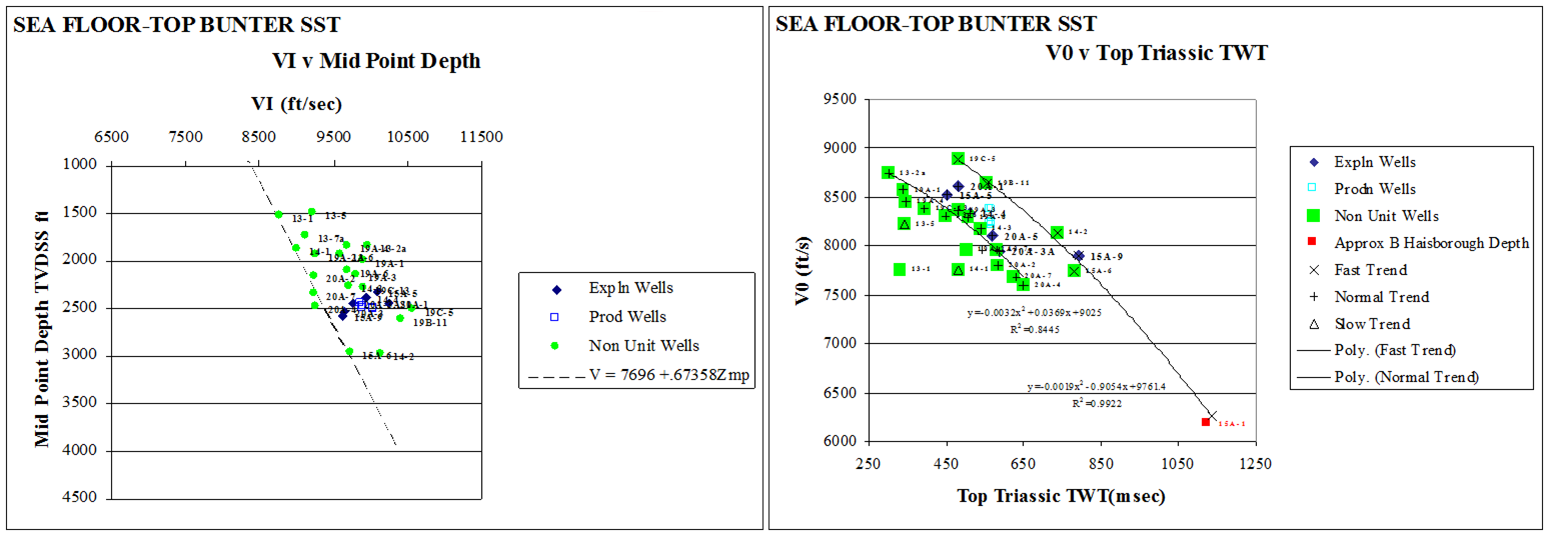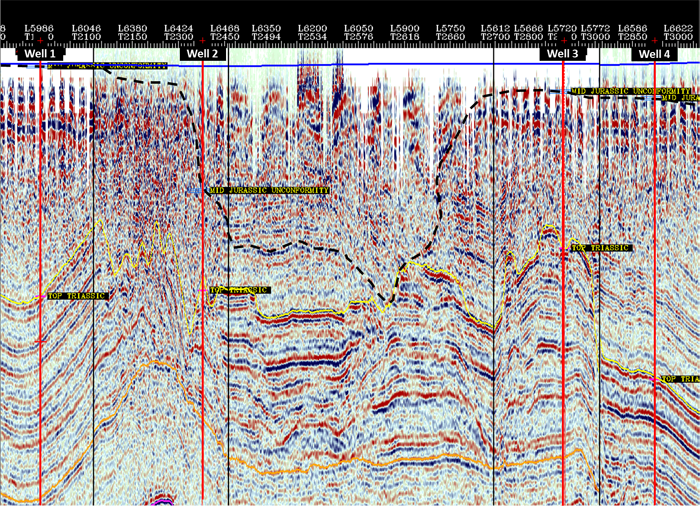

STUART FLETCHER
Consultant Geophysicist
Project Summary
Detailed depth conversion analysis for a Field Equity Determination in the UK's Southern Gas basin.
On this project I was a member of the client's equity determination team, on the geophysical sub-committee.
One element of the work was a detailed study of the effects of the overburden's velocity variations and the design of an appropriate depth conversion methodology.
The study allowed the client to enter partner negotiations with a risked assessment of the equity split.

Velocity variations for the post salt were studied in terms of
